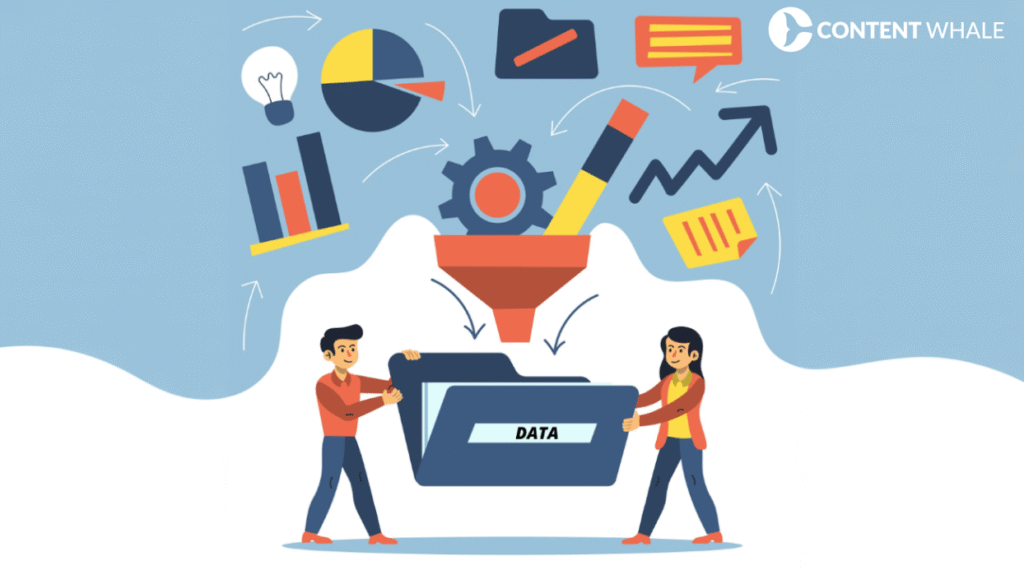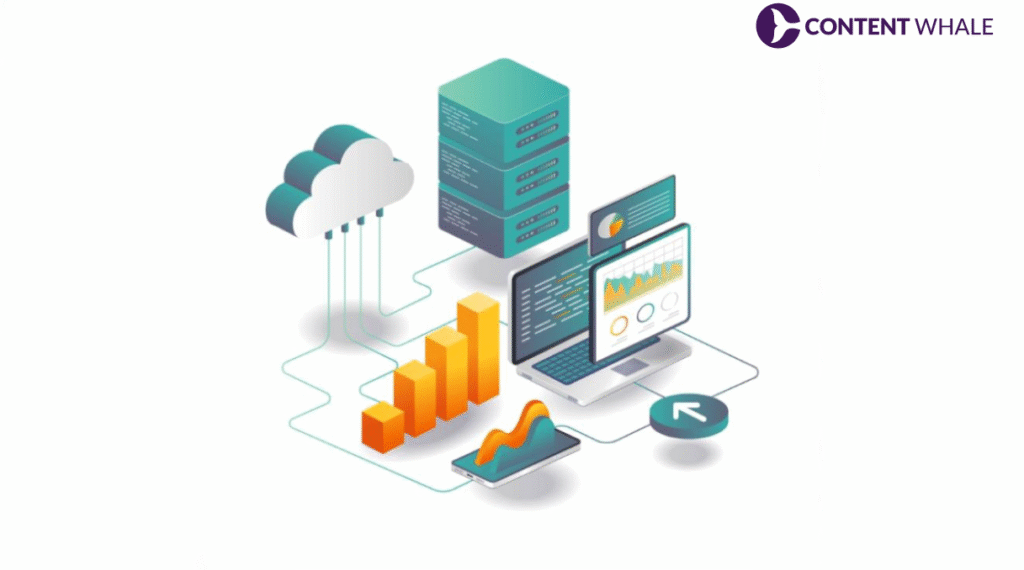The $80 billion SEO industry faces disruption as AI platforms process 780 million monthly queries through ChatGPT, Perplexity, and Gemini. Traditional search volume drops 25% by 2026, replaced by generative engine optimization that prioritizes citations over clicks.
GEO shifts focus from rankings to reference rates, how often AI models cite your content. While Google still sends 300 times more traffic than AI platforms, AI traffic grew 700% from 2024 to 2025, reaching 0.15% of global internet traffic. ChatGPT dominates with 77.97% of AI referrals, while Perplexity captures 15.10% with highly engaged users spending 9 minutes per session.
Over 40% of search interactions now involve AI assistants or zero-click interfaces. This guide explains how brand optimizing for AI search gain early mover advantage in the ever-changing AI landscape (Source).
Understanding GEO and Its Growing Impact on Search
Generative engine optimization fundamentally differs from traditional SEO by focusing on how AI models consume and reference your content. Instead of competing for position one on search engine results pages, you’re optimizing to become the most cited source in AI generated responses.
What Makes GEO Different from Traditional SEO?
Traditional SEO centers on keyword rankings and click through rates. GEO, however, prioritizes reference rates, the frequency with which AI platforms like ChatGPT, Perplexity, and Google’s AI Overviews cite your content when generating answers. Your content must be structured for AI comprehension, not just human readers.
This means implementing structured data markup, creating clear entity relationships, and formatting content for easy extraction by language models. Research from Princeton University shows that specific GEO methods increase visibility by 115% for lower ranked websites (Source).
The Statistics Behind AI Search Growth in 2025
ChatGPT reached 400 million weekly users by February 2025, while Perplexity AI processes 30 million queries daily across its 22 million monthly active users. AI search platforms now account for 0.15% of global internet traffic, up from 0.02% in 2024.
Google’s AI Overviews appear on 13% of all search results, affecting billions of monthly searches. The speech recognition market projects reaching $21 billion in 2025, expanding to $47 billion by 2030 (Source).
How Reference Rates Replace Click Through Rates?
Reference rates measure success in the GEO ecosystem. When ChatGPT answers a query about your industry, does it mention your brand? These citations matter more than traditional metrics because they indicate AI trust and brand visibility.
Platforms like Profound and Daydream enable brands to analyze their presence in AI generated responses and track sentiment across model outputs. The shift from clicks to citations reflects how users consume information differently with AI (Source).

Multimodal Optimization Takes Center Stage in GEO
AI systems no longer process only text. Multimodal search capabilities demand content optimization across text, images, audio, and video formats.
Visual Search Integration with Google Lens Processing 20 Billion Monthly Queries
Google Lens handles 20 billion visual searches monthly, requiring brands to optimize media assets with schemas like ImageObject and VideoObject. Multimodal optimization means ensuring your product images contain proper alt text, structured data, and contextual information that AI systems can extract.
Visual search queries differ fundamentally from text searches. Your visual content must be tagged, described, and connected to relevant entities in your knowledge graph.
Voice Search Adoption with 8.4 Billion Assistants in Use
Voice search optimization becomes critical as 153.5 million Americans use voice assistants and 35% own smart speakers. The average voice search result page loads in 4.6 seconds, which is 52% faster than typical web pages.
More than 70% of voice search results pull information from featured snippets. Your content must answer specific questions directly and concisely (Source).
Combined Text Image Audio Search Capabilities
Retrieval Augmented Generation enables AI systems to process multiple input types simultaneously. OpenSearch models now work with three types of inputs: text, images, and combined text image searches.
Your product descriptions, image tags, and video transcripts must all align semantically. Brands excelling at multimodal optimization create interconnected content ecosystems where every format reinforces the others.
RAG Technology and Real Time Data Integration
Retrieval Augmented Generation transforms how AI systems access and utilize information. Instead of relying solely on training data, RAG enables generative engines to fetch real time information from external sources.
How Retrieval Augmented Generation Powers AI Search?
RAG technology connects AI models to external knowledge sources, providing real time data unavailable during initial training. Perplexity performs real time web searches for virtually every query, synthesizing answers from the latest available information.
Your content must be structured for easy extraction by RAG systems, which means clear headings, concise paragraphs, and direct answers to common questions.
Why Fresh Content Matters More Than Ever
AI systems using RAG technology actively seek current information, making content freshness a ranking factor. Including publication dates, last updated timestamps, and author credentials in your structured data helps AI systems assess content recency. Studies show that content updated within the past three months receives preferential treatment in AI citations (Source).

Entity Based Optimization Replaces Keyword Focus for GEO
Search engines evolved from keyword matching to entity understanding. AI systems identify brands, products, people, and events, using these entities to construct answers and connect facts.
Schema Markup Implementation for AI Understanding
Schema markup creates a direct communication channel between your content and search engines. Implementing Person, Organization, or Place schema clearly defines relevant entities, enhancing visibility in Knowledge Graphs. A benchmark study by Data World found that LLMs grounded in knowledge graphs achieve 300% higher accuracy compared to those relying solely on unstructured data.
Building Content Knowledge Graphs
Content knowledge graphs organize information around entities and their relationships rather than keywords. Identifying core entities on your site and defining how they connect creates a semantic data layer that AI systems can understand. Entity linking connects your content to broader knowledge ecosystems by referencing authoritative sources.
Citation Building and Authority Signals in AI Search
AI systems prioritize trustworthy sources, making citation quality and authority signals critical for GEO success.
Expert Quotes and Third Party Validation
Including expert quotes and third party citations boosts credibility in AI generated responses. A health article by a board certified physician with cited peer reviewed studies has significantly higher chances of being referenced. Generative engines analyze the authority of sources you cite, creating a credibility chain.
Author Credentials and E-A-T Requirements
Clearly labeled author bios and credentials validate expertise for AI systems. Including author schema with professional qualifications establishes authors as recognized entities within their domains.
Google’s E-A-T guidelines apply even more stringently to AI search because systems need verifiable signals to determine source quality.
Platform Specific GEO Strategies for Maximum Visibility
Different AI platforms operate with unique algorithms and user behaviors requiring tailored optimization approaches.
Optimizing for ChatGPT with 400 Million Weekly Users
ChatGPT processes queries using a conversational model that prioritizes comprehensive, well structured answers. Users typically seek detailed explanations and step by step guides.
Your content should provide thorough coverage of topics while maintaining clear hierarchical structure. The platform sends 10% of new signups to some companies like Vercel, demonstrating significant conversion potential (Source).
Google AI Overviews and Gemini Optimization
Google’s AI Overviews appear on billions of searches monthly, synthesizing information from multiple sources. Content optimized for AI Overviews requires featured snippet formatting and comprehensive topic coverage. Gemini attracts developers and technical users, making technical accuracy and code examples critical for this platform (Source).

Hybrid SEO GEO Strategies for Complete Coverage
Success in 2025 requires balancing traditional search optimization with generative engine optimization.
Balancing Traditional Search and Generative Engines
Google still sends 300 times more traffic than all AI platforms combined, making traditional SEO critical for near term revenue. However, AI traffic’s 700% annual growth rate signals a fundamental shift. Strong technical foundations benefit both traditional search and generative engines. Quality content creation and comprehensive topic coverage work across both channels.
Measuring Success Beyond Traffic Metrics
GEO success requires new measurement frameworks beyond traditional traffic and rankings. Citation frequency becomes a primary KPI. Tools like Profound and Daydream enable brands to track their presence in AI generated responses. Conversion tracking from AI referral traffic reveals whether these visitors deliver business value (Source).
How Content Whale Can Help?
Content Whale specializes in AI search optimization strategies that position brands for citations across ChatGPT, Perplexity, and Google AI Overviews. Our team implements entity based content architecture, structured data markup, and citation worthy formatting that generative engines prioritize.
We analyze your brand’s visibility across AI platforms, identify optimization gaps, and create comprehensive geo strategies combining traditional SEO with next generation AI discovery. From schema implementation to voice search optimization, we ensure your content meets the technical and semantic requirements of LLM powered search.
Conclusion
The shift from SEO to GEO represents the most significant search transformation since Google’s early algorithms. With AI platforms growing 700% annually and traditional search volume declining, brands must optimize for both paradigms. Generative engine optimization demands structured data, entity relationships, authoritative citations, and multimodal content that AI models can understand and reference.
Companies implementing comprehensive structured data and entity focused content will dominate AI citations while competitors remain invisible in AI search results. Start by auditing your current visibility across AI platforms, implementing schema markup, and optimizing content for citation worthiness.
Ready to dominate AI search results? Contact Content Whale to build your comprehensive GEO strategy.
FAQs
Q1: What is the difference between SEO and GEO in 2025?
SEO optimizes for rankings and clicks in traditional search engines, while GEO optimizes for citations in AI generated responses. Traditional SEO focuses on keyword density, whereas generative engine optimization prioritizes structured data and entity relationships for AI extraction.
Q2: Which AI platforms should businesses prioritize for GEO?
ChatGPT dominates with 77.97% of AI traffic and 400 million weekly users. Perplexity captures research focused professionals with high engagement rates. Google AI Overviews appear on 13% of searches. Prioritize platforms where your target audience actively seeks information.
Q3: How does schema markup improve AI search visibility?
Schema markup creates structured data that AI systems can easily extract and understand. Studies show LLMs grounded in knowledge graphs achieve 300% higher accuracy, making schema implementation critical for increasing citation likelihood across AI platforms.
Q4: What are reference rates and why do they matter?
Reference rates measure how frequently AI platforms cite your content when generating responses. High reference rates signal authority within your industry and increase brand visibility as users receive AI generated answers featuring your content.
Q5: Can GEO replace traditional SEO strategies?
No, GEO complements traditional SEO rather than replacing it. Google still sends 300 times more traffic than all AI platforms combined. However, with AI traffic growing 700% annually, brands need both strategies for comprehensive digital visibility.





